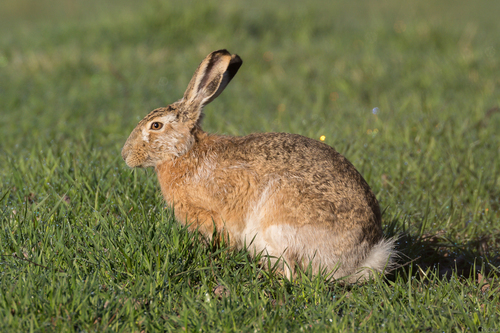
European Hare
The European hare (Lepus europaeus) leaps through open landscapes with remarkable speed, characterized by its distinctive long ears and powerful hind legs. Known for its playful 'boxing' displays during mating, this crepuscular creature adds dynamism to grassland ecosystems as both prey and forager.
4 years
Lifespan
Least Concern
Conservation Status
Decreasing
Population Trend
Distribution Range of the European Hare
Lepus europaeus, commonly known as the European Hare, is native to a wide region that spans across Europe and extends into parts of Asia. Its range includes most of central and western Europe, extending eastwards into Russia and parts of the Middle East, such as Turkey and parts of western Iran. The species has also been introduced into other regions such as Australia, South America, and parts of North America.
European Hare's Habitat
Environmental Conditions
European Hares typically inhabit open country and agricultural land, preferring areas with a combination of grasses and scattered bushes or trees which provide some cover. They are often found in temperate regions with moderate climates but can adapt to a variety of environmental conditions, including semi-arid areas. The species is capable of living in both lowland regions and up to elevations around 2000 meters.
Ecological Niche
Lepus europaeus is adapted to environments where they can exploit an abundant supply of ground vegetation for food. They primarily feed on grasses, herbs, and crop plants, which makes them common in farmlands and pastures. The European Hare serves as a prey species for various predators, including foxes, birds of prey, and humans, contributing significantly to the ecological food web. Their impact on agriculture through feeding on crops can make them a pest species in some areas.
Copyright @ Nature Style Limited. All Rights Reserved.
 English
English